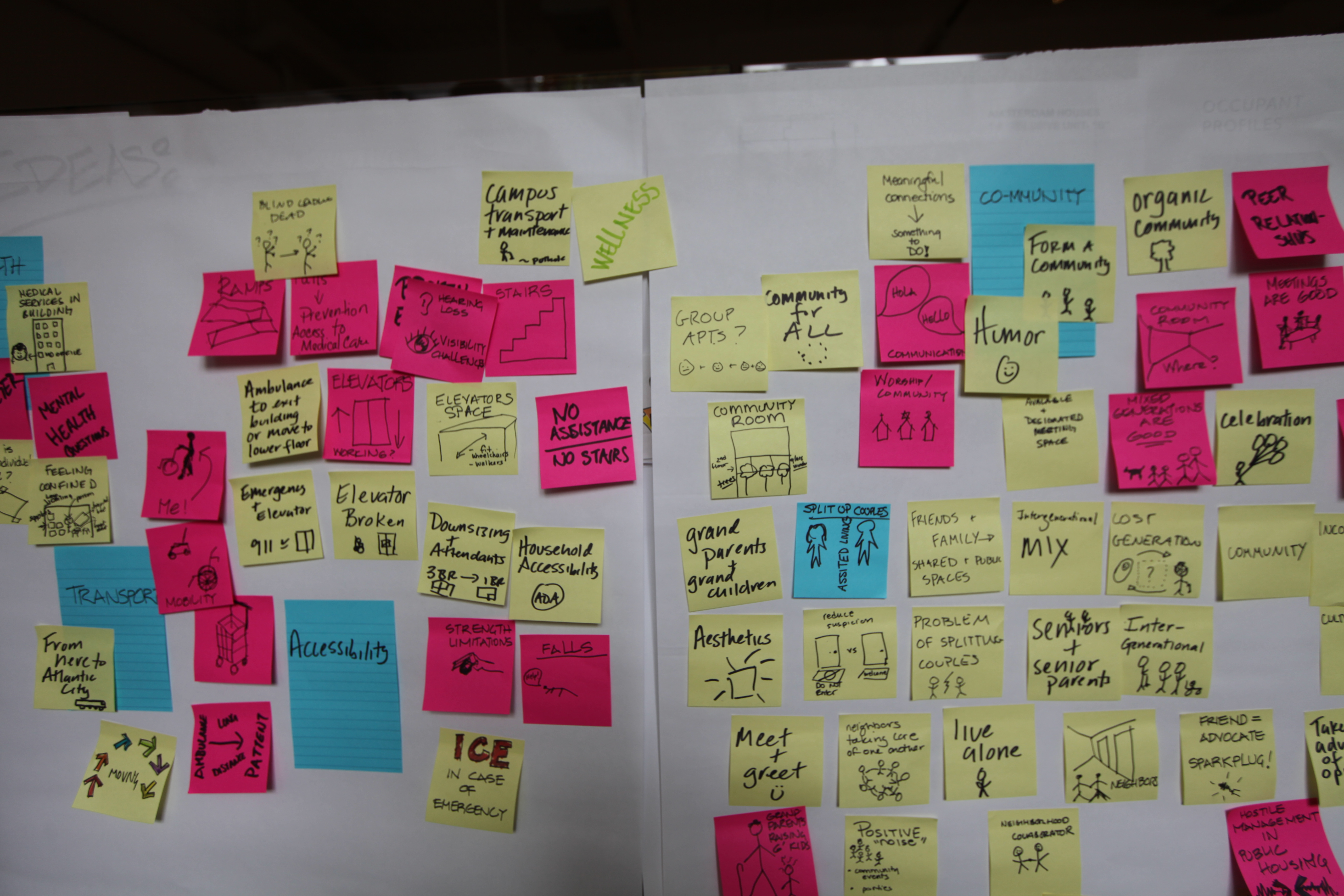by: Linda G. Miller
For more than a year, the AIANY Design for Aging Committee has been exploring how to design suitable housing that will allow our aging population to continue to live independently. The initiative – BOOMING BOROUGHS: Redesigning Aging-in-Place in NYC – was created to increase awareness of the design needs of seniors living in urban areas. The committee produced an all-day charrette followed by a panel discussion where participants addressed this overarching question: How do we create more age-friendly places to live?
You don’t know Delia and Jose, Erminia, Jack and Bruce, Matilda, Rose and Charlie, Zhang, Oleg, and Patty and Mary – they are 12 hypothetical individuals living in eight households – four alone, four as couples – that represent a range of seniors. But in them you might see your next door neighbor, yourself, a former high school teacher, or even your favorite aunt or uncle. The avatars were intended to provide charrette participants the ethnic and geographic variety of 60+ folks.
An equally diverse group of professionals – architects, interior designers, landscape architects, aging advocates, social workers, physical and occupational therapists, nurses and a medical doctor, city planners, and developers – separated into five groups. Four groups tackled a different housing typology that the committee thought covered all possibilities from the existing housing stock: individual housing, low-rise walk-ups and mid-rise elevator buildings, high-rise buildings, and adaptive reuse of an entire building for multiple uses. The fifth group was formed to generate all different kinds of ideas that may or may not fit any one typology. Expert advisors worked with each group to infuse concepts from their areas of expertise and cross-pollinate ideas.
Participants developed many interesting proposals to adapt our buildings and neighborhoods to the needs of the aging. Not only universal design, but also strategies to promote mobility (as described in the Active Design Guidelines) and to create neighborhoods that reduce isolation and encourage social life. David Burney FAIA, Commissioner of the NYC Department of Design + Construction and AIANY Vice President for Design Excellence, served as a charrette advisor. “Especially inspiring was the idea that design for aging should not be seen as a ‘problem,’ but that seniors should be celebrated for their experience and wisdom; that our senior years (and even our death) should be an opportunity for creativity in both design and living,” he remarked.
Pratt Institute Professor Bruce Hannah, who was also an advisor, said, “The designs showed both empathy and respect for the idea of aging in place. They challenged the current political climate to re-think how space is allocated in public housing to better suit the needs of the elderly and everyone else. The coming together of architects, politicians, social workers, and users is a major step in the re-thinking of how housing is conceived, built, and inhabited. I hope more of these kinds of things happen sooner, rather than later.”
Jerry Maltz, AIA, Co-chair of the AIANY Design for Aging Committee, said that “the process has been very intensive and exciting, and the outcomes so far are extremely stimulating. But much of the work needed to achieve our goals is still in the future and is daunting. However, we aim to carry on!”
And so they will. The Design for Aging Committee plans to make the charrette’s results available to the general public and groups who can implement these ideas through an exhibition at the Center for Architecture and a design competition.
Event: BOOMING BOROUGHS: Redesigning Aging-in-Place
Location: Center for Architecture, 05.18.13
Organizer: AIANY Design for Aging Committee
Lead Sponsors: Rose Associates; Thornburg Foundation
Sponsors: Ethelind Coblin Architect
Supporters: Capsys Corporation
Best Friends: AARP New York; James Hardie Building Products; SKA Marin
Friends: Hamlin Ventures LLC; HWKN; NYS Builders Association Research & Education Foundation; OMNI Architects

























